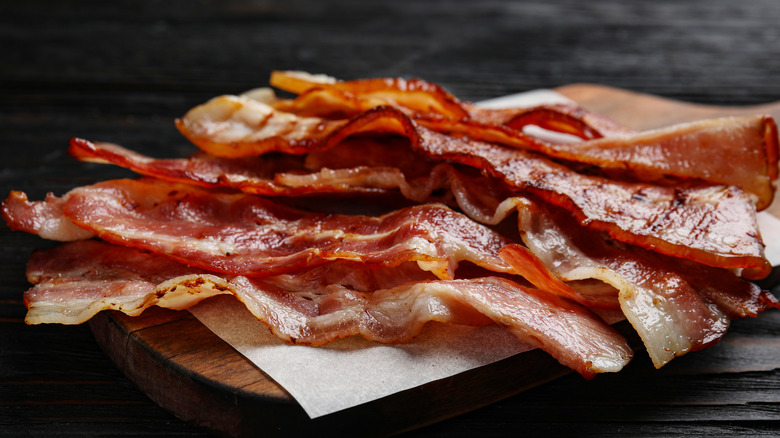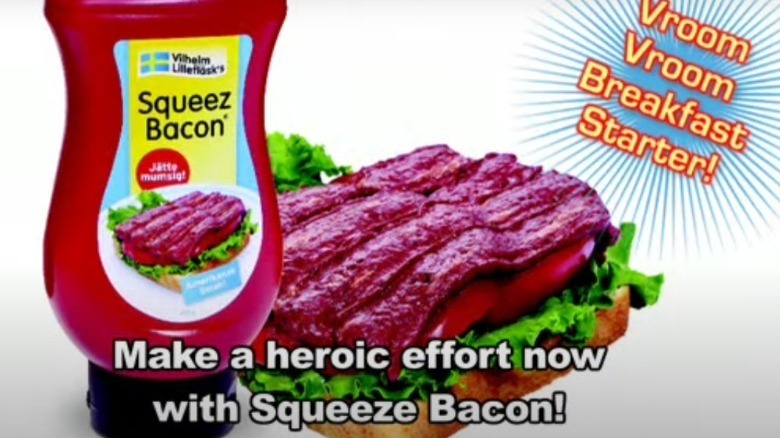The Truth About Squeez Bacon
Some foods are so superb they deserve endless servings of gratitude and respect. Cheese, for instance. Or ice cream. The person who invented hot dogs deserves money, medals, and praise in Congress.
Without bacon, kitchens across the world would be dull and depressing. Research by The Spruce Eats notes that bacon was being used thousands of years ago in China, before being introduced to America in 1539. Bacon became so uncontrollably popular that pigs ruled the streets of New York right through to the 19th Century, subtly dominating humanity with their snorts and curly pink tails. It's currently the most popular pork product in America. Even though bacon sales and revenues continue to surge, according to Meat+Poultry, its convenience is questionable. After all, slipping the hooves off a pig and slicing it up cannot be done on the front yard. That's where the brilliant idea of Squeez Bacon came in — but all was not as it seemed.
Squeez Bacon was literally too good to be true
Squeez Bacon proclaimed to be the solution to all problems. Not global warming, obviously — but solving bacon-related issues was a good start. Boasting the ability to smother bacon across anything from burgers to bears as a squirtable spread, Squeez Bacon came with a 12-year shelf life, 16 servings (which allegedly amounted to 64 slices of bacon), and a $7.99 price tag (via TechCrunch).
However, despite its potential to revolutionize greasy junk food, Squeez Bacon was found to be a hoax. Fact-checking website Snopes revealed the fake invention was created by website ThinkGeek as an April Fool's prank in 2009. (Alas, Think Geek was purchased by Gamestop in 2015, as the Dallas Morning News reported, but you can still see the product's prank ad on YouTube – "Available now at most grocery stores and petrol stations!")
Although Squeez Bacon is a confirmed fraud, hope for a handy bacon paste is not yet lost. A recipe featured on Instructables Cooking showcases an apparent success at creating homemade bacon sauce (even though the resulting paste resembles revolting strands of brown, lumpy gunk).

